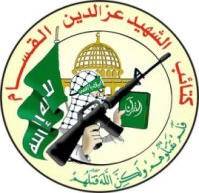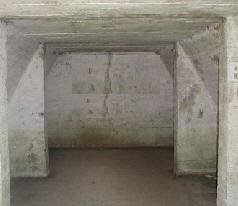Alastair Crooke and Mark Perry
Their analyzes concludes that Hezbollah is a crack organization.
They had bunkers, weapons caches, spies, command centers, etc. They
conclude that Hezbollah was the real winner in the 2006 Lebanon
conflict.
|
 |
| |
|
|

|
Lebanon Was A American/Israeli Conflict
They disagree with the White House and Israeli conclusion that
Israel's offensive in Lebanon significantly damaged Hezbollah's
ability to wage war, that Israel successfully degraded Hezbollah's
military ability to prevail in a future conflict.
|
| |
|
Hezbollah Commanders Were a Match For Israel
From the onset of the conflict to its last operations, Hezbollah
commanders successfully penetrated Israel's strategic and tactical
decision-making cycle across a spectrum of intelligence, military and
political operations, with the result that Hezbollah scored a decisive
and complete victory in its war with Israel.
|
 |
| |
|
|

|
The Start Of The War
Hassan Nasrallah admitted that Israel's military response to the
abduction of two of its soldiers and the killing of eight others at
9:04 on the morning of July 12 came as a surprise to the Hezbollah
leadership.
|
| |
|
Hezbollah Works Close With Iran
Nasrallah's comment ended press reports that Hezbollah set out
purposely to provoke a war with Israel and that the abductions had
been part of a plan approved by Hezbollah and Iran.
|
 |
| |
|
|
 |
Hamas Applauds Hezbollah
Hamas leadership defended Hezbollah actions, even though Israel
slaughter 200 Palestinians as the world watched Lebanon.
|
| |
|
Hezbollah Expected A Prisoner Exchange
In truth, the abduction of the two Israeli soldiers and the killing
of eight others took the Hezbollah leadership by surprise and was
effected only because Hezbollah units on the Israeli border had
standing orders to exploit Israeli military weaknesses. Nasrallah had
himself long signaled Hezbollah's intent to kidnap Israeli soldiers,
after former prime minister Ariel Sharon reneged on fulfilling his
agreement to release all Hezbollah prisoners - three in all - during
the last Hezbollah-Israeli prisoner exchange.
|
 |
| |
|
|

|
Israelis Were Vulnerable
The abductions were, in fact, all too easy: Israeli soldiers near
the border apparently violated standing operational procedures, left
their vehicles in sight of Hezbollah emplacements, and did so while
out of contact with higher-echelon commanders and while out of sight
of covering fire.
"A force of tanks and armored personnel carriers was immediately sent
into Lebanon in hot pursuit. It was during this pursuit, at about 11am
... [a] Merkava tank drove over a powerful bomb, containing an
estimated 200 to 300 kilograms of explosives, about 70 meters north of
the border fence. The tank was almost completely destroyed, and all
four crew members were killed instantly. Over the next several hours,
IDF soldiers waged a fierce fight against Hezbollah gunmen ... During
the course of this battle, at about 3pm, another soldier was killed
and two were lightly wounded."
|
| |
|
IDF Blunders
The abductions marked the beginning of a series of IDF blunders
that were compounded by commanders who acted outside of their normal
border procedures. Members of the patrol were on the last days of
their deployment in the north and their guard was down. The eight died
when an IDF border commander, apparently embarrassed by his abrogation
of standing procedures, ordered armored vehicles to pursue the
kidnappers. The two armored vehicles ran into a network of Hezbollah
anti-tank mines and were destroyed. The eight IDF soldiers died during
this operation or as a result of combat actions that immediately
followed it.
|
 |
| |
|
|

|
Hezzbolah Goes On Alert
Despite being surprised by the Israeli response, Hezbollah fighters
in southern Lebanon were placed on full alert within minutes of the
kidnappings and arsenal commanders were alerted by their superiors.
Hezbollah's robust and hardened defenses were the result of six years
of diligent work, beginning with the Israeli withdrawal from the
region in 2000. Many of the command bunkers designed and built by
Hezbollah engineers were fortified, and a few were even
air-conditioned.
|
| |
|
Hezbollah Bunker Command
The digging of the arsenals over the previous years had been
accompanied by a program of deception, with some bunkers being
constructed in the open and often under the eyes of Israeli drone
vehicles or under the observation of Lebanese citizens with close ties
to the Israelis. With few exceptions, these bunkers were decoys. The
building of other bunkers went forward in areas kept hidden from the
Lebanese population. The most important command bunkers and
weapons-arsenal bunkers were dug deeply into Lebanon's rocky hills -
to a depth of 40 meters. Nearly 600 separate ammunition and weapons
bunkers were strategically placed in the region south of the Litani.
|
 |
For security reasons, only the top commanders knew the location of
each bunker and each distinct Hezbollah militia unit was assigned
access to three bunkers only - a primary munitions bunker and two
reserve bunkers, in case the primary bunker was destroyed. Separate
primary and backup marshaling points were also designated for distinct
combat units, which were tasked to arm and fight within specific
combat areas. The security protocols for the marshaling of troops was
diligently maintained. No single Hezbollah member had knowledge of the
militia's entire bunker structure.
|
| |
|
|

|
IDF Targets Hezbolah's Arsenal
Hezbollah's primary arsenals and marshaling points were targeted by
the Israeli Air Force (IAF) in the first 72 hours of the war. Israel's
commanders had identified these bunkers through a mix of intelligence
reports - a network of trusted human-intelligence sources recruited by
Israeli intelligence officers living in southern Lebanon, including a
large number of foreign (non-Lebanese) nationals registered as guest
workers in the country.
The initial attack on Hezbollah's marshaling points and major bunker
complexes, which took place in the first 72 hours of the war, failed.
On July 15, the IAF targeted Hezbollah's leadership in Beirut.
|
| |
|
Hezbolah In Beruit
Reports that the Hezbollah senior leadership had taken refuge in
the Iranian Embassy in Beirut (untouched during Israel's aerial
offensive) are not true, though it is not known precisely where the
Hezbollah leadership did take shelter. "Not even I knew where I was,"
Hezbollah leader Nasrallah told one of his associates.
|
 |
| |
|
The Israeli military's plans called for an early and sustained
bombardment of Lebanon's major highways and ports in addition to its plans
to destroy Hezbollah military and political assets. The Israeli government
made no secret of its intent - to undercut Hezbollah's support in the
Christian, Sunni and Druze communities. That idea, to punish Lebanon for
harboring Hezbollah and so turn the people against the militia, had been a
part of Israel's plan since the Israeli withdrawal from southern Lebanon
in 2000.
|

|
Qana And Other Massacres
After the IDF failed on the bunkers they decided to bomb civilians.
|
| |
|
Hezbollah Hide Weapons In Schools
The "target stretching" escalated throughout the conflict;
frustrated by their inability to identify and destroy major Hezbollah
military assets, the IAF began targeting schools, community centers
and mosques - under the belief that their inability to identify and
interdict Hezbollah bunkers signaled Hezbollah's willingness to hide
their major assets inside civilian centers.
|
 |
| |
|
Qana Was A Supply Depot
IAF officers also argued that Hezbollah's ability to continue its
rocket attacks on Israel meant that its militia was being continually
resupplied. Qana is a crossroads, the junction of five separate highways,
and in the heart of Hezbollah territory. Interdicting the Qana supply
chain provided the IAF the opportunity to prove that Hezbollah was only
capable of sustaining its operations because of its supply-dependence on
the crossroads town. In truth, however, IDF senior commanders knew that
expanding the number of targets in Lebanon would probably do little to
degrade Hezbollah capabilities because Hezbollah was maintaining its
attacks without any hope of resupply and because of its dependence on
weapons and rocket caches that had been hardened against Israeli
interdiction. In the wake of Qana, in which 28 civilians were killed,
Israel agreed to a 48-hour ceasefire.
Hezbolah Has It's Own CIA Type Network
In fact, over a period of two years, Hezbollah intelligence officials
had built a significant signals-counterintelligence capability.
Moreover, during two years from 2004 until the eve of the war, Hezbollah
had successfully "turned" a number of Lebanese civilian assets reporting
on the location of major Hezbollah military caches in southern Lebanon to
Israeli intelligence officers. In some small number of crucially important
cases, Hezbollah senior intelligence officials were able to "feed back"
false information on their militia's most important emplacements to Israel
- with the result that Israel target folders identified key emplacements
that did not, in fact, exist.
Hezbollah Broke Israeli Radio Code
Finally, Hezbollah's ability to intercept and "read" Israeli actions
had a decisive impact on the coming ground war. Hezbollah intelligence
officials had perfected their signals-intelligence capability to such an
extent that they could intercept Israeli ground communications between
Israeli military commanders.
"Israel lost the war in the first three days," one US military expert
said. "If you have that kind of surprise and you have that kind of
firepower, you had better win. Otherwise, you're in for the long haul."
Complete
Article
|





